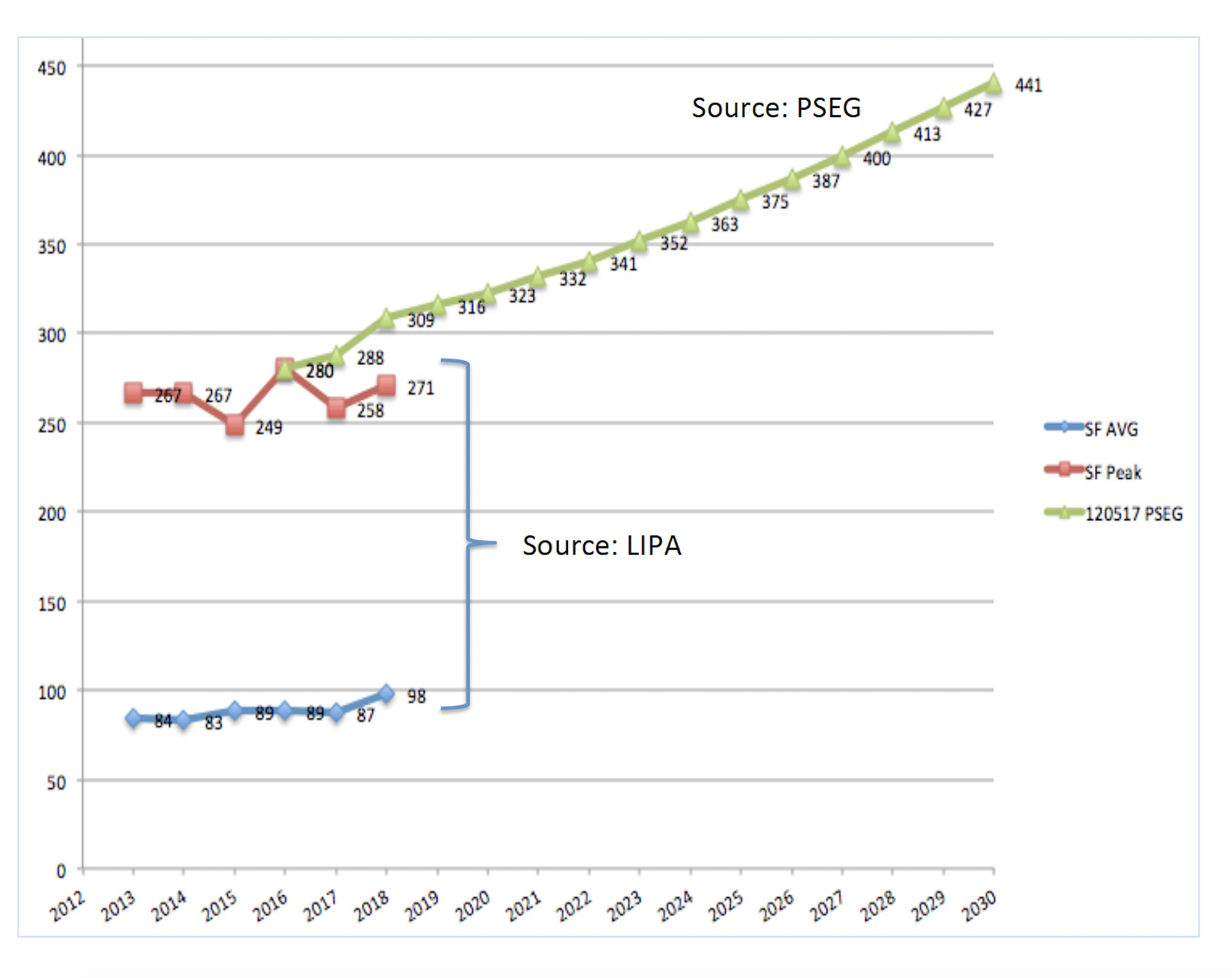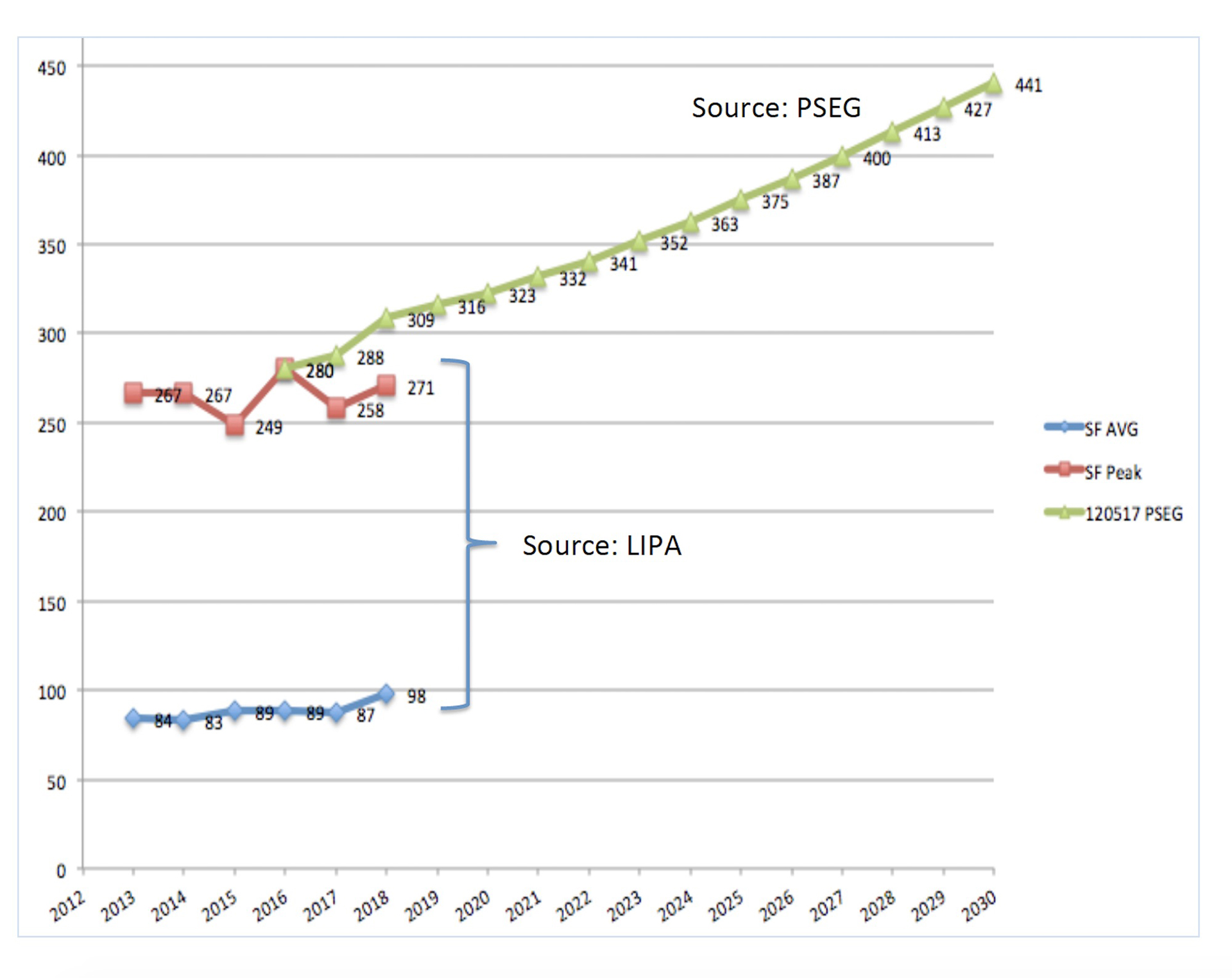Green Efforts Reverse Usage Trend


Southampton Town is reversing a long trend of increasing the amount of electricity it consumes.
From 2015 to 2017, total kilowatt hours decreased by just under three percent, according to data from PSEG — Long Island.
“This is due to you,” Lynn Arthur, a member of the town’s Sustainability Committee, told the town board on Thursday, November 8. “You guys have the policies that you’ve approved, the programs that you’ve funded — this is the result, this is a tangible result. We should be celebrating. This is awesome.”
Several town code changes and outreach projects have led to the decline in electricity demand as Southampton works to become 100 percent renewable by 2025.
Some of the ventures that have limited demand include the town’s LED lighting project, free solarization evaluations, and the Home Energy Ratings System mandates. New code guidelines require that new construction over 4500 square feet must propose a practicable plan for alternative methods of energy conservation.
Through its programs and code changes, and as a result of being part of the New York State Energy Research and Development Authority benchmark program, the town can see the reported trend, which shows kilowatt hours decreased from 724,875,753 to 709,688,061 from 2015 to 2017.
Assistant Town Planning Director Janice Scherer said more homeowners are considering putting in geothermal heating systems in place of traditional oil burners.
“We’re fortunate that we live in a community where our commitment to the concept of sustainability and principals of sustainability is pretty widespread,” Deputy Supervisor Frank Zappone said. While attending a program on solarization sponsored by the Nature Conservancy and others at Farmingdale State College just over a week ago, Zappone said those representing other municipalities were interested in hearing about the town’s projects, and asked to see a copy of its resolution to become 100 percent renewable, and the Home Energy Rating System mandates.
Even though the town saw 1000 to 1500 new houses built over the past three years, the load continues to trend down. That’s because with new construction has come demolitions, other homeowners have worked to become more energy efficient, and undeveloped lots have been preserved through the town’s Community Preservation Fund. Zappone said the key goal moving forward is to decrease peak demand.
“That’s where the rubber meets the road,” he said.
Peak demand periods are important because the Long Island Power Authority and PSEG — Long Island, which manages the grid for it, are required to be able to provide enough power to meet those peak demands, which typically occur on hot, summer afternoons when air conditioners and pool pumps are being used heavily. To be able to meet the demands during those periods, PSEG runs a number of small, “peaker” generators that typically rely on fossil fuels to operate. LIPA has also sought to beef up its transmission lines to meet a projected future demand that may no longer be there, some critics say.
Southampton has achieved Climate Smart Community bronze level, and is on the path to become the third municipality in the state to achieve silver status. Director of Municipal Works Christine Fetten said the town has even more opportunities to do good work going forward, like in the redevelopment of the Hampton Bays Jackson Avenue campus, greening up compost sites, and through replacing the HVAC system at Town Hall.
“We have an opportunity to lead by example,” Fetton said. “Not only are these projects energy efficient, but they’re cost-saving. We have a very exciting future in front of us. We can make a positive and huge dent in this area.”
desiree@indyeastend.com



